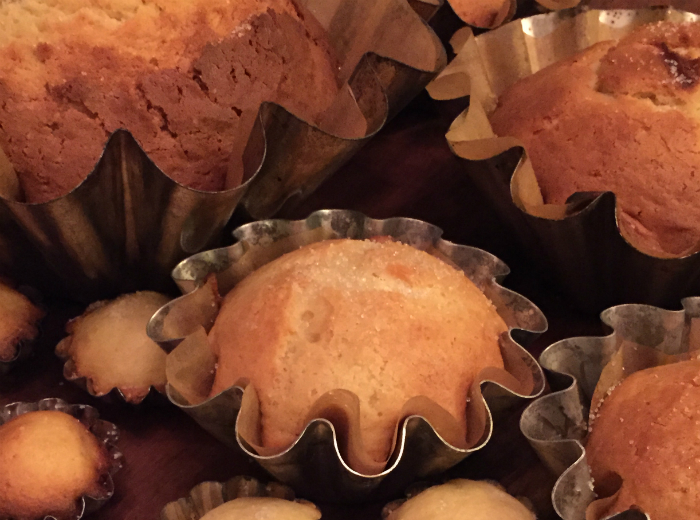For the majority of the year, I am half Filipina, far distanced from cultural traditions that began fading when my grandparents uprooted the family from their homeland. But during Christmas, I try to embrace this identity fully through a few small rituals. Every year we hang our párol star lantern in the front window, we let Nana say grace before eating chicken adobo and pancit, and we bake torta.
Torta is this wonderfully rich, dense pound cake baked in special pans lined with colorful paper—usually the same paper we used to make párols. I remember my mom showing me when I was young how to cut the scalloped edges of the paper and carefully fill the ridges of the pans. Making and distributing torta as gifts was one of Mom’s many holiday duties, and now it is mine. (This means Nana’s favorite Christmas present is from me.)
Since torta is such a Christmas constant for us, I always figured it was a tradition across the Philippines, but I recently realized I’ve never heard of other Filipinos baking the same dessert. I wondered, is this really a cultural tradition or just something my family made up?
As it turns out, “torta” in the northern end of the archipelago more commonly refers to an egg omelet with ground meat. In the Visayan Islands further south, including Nana’s island of Samar, torta mamon Cebuano is a standard sweet for most fiestas, celebrating all patron saints and holidays—not just Christmas. The traditional cake is nearly the same as ours, except leavened with tuba (fermented coconut wine) instead of baking powder, flavored with anise instead of vanilla, and sprinkled with cheese in addition to sugar.
So our recipe has been altered, slightly Americanized, from the Filipino tradition. But even within our family tradition, our memories have been skewed. While my aunt Nita remembers eating torta only after Midnight Mass on Christmas, following a day of Nana surrounding herself with bowls, pans, and parchment paper, Nana claims they had torta for all occasions—and she never baked. “The maids did that.”
This tasty bit of family folklore illustrates a lesson I’ve learned again and again: traditions change and grow, uproot and reroot, at the macro level of nations to the micro level of families, and that doesn’t make them any less valuable or meaningful. It makes them ours.
Ingredients
4 1/2 cups flour
2 1/2 cups sugar
1 stick margarine
10 egg yolks
1/2 cup oil or shortening
2 lids (or 4 teaspoons) baking powder
1 can evaporated milk
1/3 cup water
2 tsp vanilla
Directions
1. In a bowl, sift together flour and baking powder.
2. In a mixing bowl, cream the sugar with oil and margarine. Add egg yolks and then sugar, and beat until soft.
3. Add the flour mixture into the mixer little by little, alternating with the evaporated milk. Finally add the water and vanilla.
4. Grease brioche pans, line with parchment paper, and grease the paper. Fill halfway with batter. (Other deep cake pans and muffin tins will also work.)
5. Bake at 350 degrees for about ten minutes (longer for larger pans), or edges are crispy brown and until a toothpick inserted comes out clean.
6. As the cakes cool, brush with butter and sprinkle with sugar. They can be kept at room temperature for a few days, if they last!
Elisa Hough is the editor at the Center for Folklife and Cultural Heritage and the official Dulay family torta baker.


